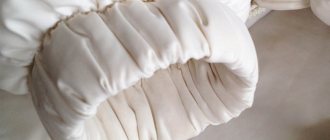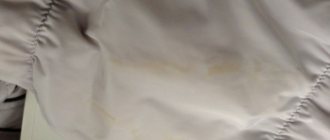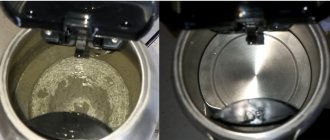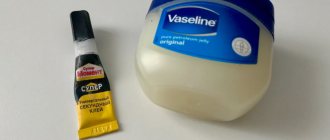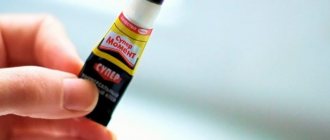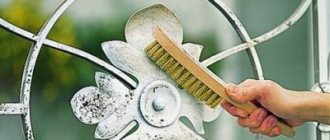Veneer is a thin sheet of wood obtained by sawing large diameter wood into thin sheets 0.1–0.5 mm thick.
The cut plates are collected together in the order in which they were removed from the trunk. This ensures that the pattern of the rings will maintain its continuity and consistent shade. Veneered doors are very similar to doors made of natural wood, and it will be difficult for non-professionals to distinguish them from each other.
The trees from which the veneer is cut are fast-growing species, usually found on special plantations, making veneer an environmentally friendly product.
For its production, some of the local wood species are used, as well as exotic species, which have recently been increasingly used in the arrangement of houses and apartments, thanks to much better parameters.
After drying, the veneer is treated with a special dye to diversify the surface structure and expand the range of colors. The paint contains substances specifically intended for coloring wooden products.
Veneer can be natural or modified. Natural veneer preserves the original grain of the wood, and the technological processing process eliminates its natural defects.
Natural veneer is very popular among wood lovers for its unique character.
A more durable and environmentally friendly alternative to solid wood, it works well in both traditional and more modern interiors.
What is an undeniable value for some may be a significant drawback for others. Therefore, a distinctive feature of natural veneer, such as the unevenness of the pattern (along with its possible defects), is both an advantage and a disadvantage of this material.
Advantages of natural veneer:
- unique ring pattern;
- excellent durability and strength (exceeding the parameters of solid wood);
- resistance to deformation;
- visible irregularities and natural defects (knots, discoloration, etc.).
Disadvantages of natural veneer:
- color changes due to sunlight and other environmental factors;
- limited choice of colors;
- visible irregularities and natural defects (knots, discoloration, etc.).
Modified veneer is also made from 100% natural wood (usually from exotic species), but a special technology guarantees a perfectly even shade and texture. Trees grown on African plantations are used, mainly from Côte d'Ivoire or Guinea.
To obtain veneer, wood is cut into slabs. All natural wood imperfections, such as discoloration or voids caused by insects, are removed. The sheets are painted and glued into blocks. Then they are folded and pressed.
Technological intervention in wood allows you to obtain the ideal shade and structure.
This veneer has a repeating pattern, but is more durable than natural veneer. Some, however, prefer natural veneers to an ideal composition that allows them to enjoy the uniqueness of real wood.
Advantages of modified veneer:
- does not change color under the influence of sunlight and other environmental factors;
- almost unlimited color possibilities (thanks to the possibilities of factory tinting);
- high durability and strength exceeding the parameters of solid wood;
- increased resistance to mechanical damage;
- repeatability and predictability of the pattern (both in structure and color).
Disadvantages of modified veneer: repeatability and predictability of grain pattern (both in structure and color).
AESTHETICS OF VENEER DOORS
Internal doors can be lined with wood from a variety of wood species - for example, ash, oak, birch, walnut or larch. This type of door often replaces solid wooden doors without compromising their dignity and elegance. A variety of door colors and designs (available in full and glazed versions) make them the perfect complement to any interior design.
CARE RECOMMENDATIONS
Veneered furniture requires the same care as wooden surfaces. Therefore, they should be cleaned with a soft cloth (such as flannel) moistened with warm water. In case of very large and persistent stains, you can use a small amount of soap (preferably natural, without adding lotions or alcohol).
It is not necessary to wipe down the door every day. Once a month, lubricate the door with a polish that contains wax to form a protective film on the surface of the product. This not only improves its appearance, but also prevents dust from getting into small cracks.
Make sure that the door is not exposed to direct sunlight. Veneer, even when exposed to high quality waterproof varnish, tends to lose its color in the sun.
When caring for a veneer door, you should strictly avoid:
- all types of detergents;
- alcohol, because its use (even once) deprives the veneer of shine;
- wood or laminate care products that can damage the veneer structure;
- polishing agents that leave persistent marks and streaks on the cladding;
- aggressive substances such as vinegar or ammonia, which can damage the impregnation layer;
- polishes for polishing furniture to a shine;
- gels and lotions, the use of which is associated with the risk of creating permanent marks;
- hot water or steam, which can cause the veneer to peel off;
- rough sponges and rags designed to remove heavy dirt, as they can damage the veneer surface and leave permanent, unsightly marks on it.
To restore old veneer furniture to its former glory, always use products strictly designed for caring for veneer surfaces.
Rules for cleaning different materials
When starting to remove stains, you need to remember that doors made of chipboard, PVC or plywood require delicate care: they are easily damaged by abrasives due to the laminated top layer.
The protective and decorative surface is a paper-based film, so such doors should be cleaned very carefully. Laminated MDF coating is more unpretentious than chipboard or PVC, but it is also forbidden to clean it with abrasives. When cleaning, avoid getting water on a laminated door if it does not have a PVC edge - otherwise, the edge of the door may delaminate and the coating will be damaged.
As with MDF, when cleaning the veneer covering, you cannot use abrasive compounds, including washing powders. Products that contain acids, oils, alcohol, acetone, and alkalis can also damage the coating.
In modern interiors, interior doors with insert glass, including frosted glass, are becoming increasingly popular. When cleaning glass inserts, avoid concentrated ammonia and gasoline. And if ordinary glass can be cleaned with a window cleaner, the rough surface of frosted glass quickly gets dirty even from light touches, and there are certain nuances in caring for it: they can only be cleaned with soft microfiber cloths or cotton cloth and not allowed contact with abrasives.
Fluorine-containing compounds are strictly prohibited for cleaning frosted glass. Fluorine leads to the decomposition of the adhesive substances of the matte layer, disrupting the texture of the glass.
WATER IS THE ENEMY OF PLYWOOD
Veneer is sensitive to all types of liquids. Therefore, cleaning these types of doors is a challenging task. However, it is enough to know a few rules so as not to harm them.
- First of all, avoid contact of the veneer with large amounts of water. When cleaning doors, use soft cloths that are only slightly damp.
- You can add a mild detergent to the water, but it is safer to use products designed for cleaning veneer surfaces. Do not use strong detergents, especially sprays - they leave permanent stains on the surface. Liquids intended for cleaning wooden floors are also not suitable, as they require copious rinsing with water.
- Wash the surface using circular movements. Make sure that water does not flow down it. Then wipe off any remaining water with a dry cloth.
- Remember to be careful when mopping the floors - make sure the wet mop does not touch the bottom edge of the door. This could cause serious damage to her.
- How you clean veneer doors is also important. There should be smooth, circular movements. Wipe the surface very carefully to avoid damage. Then you need to thoroughly wipe the door with a dry cloth. It is important that no water remains on it.
Furniture polish
A high-quality furniture polish will help hide small scratches and disguise minor damage.
The polish gives the surface additional shine, while at the same time cleaning it from dirt. Most polishes contain silicone or wax. Before treatment, the door is washed or wiped with a dry cloth, after which the product is applied and thoroughly rubbed over the damaged area.
Removing scratches from interior doors with your own hands requires patience and accuracy. You can use both home and professional products, but you will have to act gradually and methodically: first clean the coating from dirt, apply a layer of the product, let it dry, spread it again, remove the residue, polish. Sometimes you have to use several methods at the same time, combining both folk remedies and professional compounds, but as a result the door will look like new.
ROOM TEMPERATURE AND VENEER
Veneered surfaces should not be exposed to moisture and high temperatures. Interior doors will last longer if you maintain a temperature of 20-25 degrees Celsius and a humidity of no more than 60%. Usually such conditions exist in apartments.
- They must be isolated from all heating appliances, such as radiators or fireplaces.
- To protect the material from fading, it is worth limiting the veneer from prolonged exposure to direct sunlight.
- Veneered furniture should also be protected from scratches - do not use sharp rags or sponges, and also be careful with the sharp edges of the objects you use.
When assembling the door, pay attention to the manufacturer's recommendations. The warranty applies only to equipment used for its intended purpose. For example, standard doors cannot be installed in a room such as a sauna, but they are well suited for a bathroom. All you need to do is provide adequate ventilation.
VENEER - MOISTURE RESISTANCE
Veneered products indoors are exposed to moisture only in special cases.
However, the use of veneer on external surfaces requires special protective measures to improve water resistance. Therefore, the plates are usually treated with special solutions that glue the cellulose fibers together. Subsequent pressing of layers of material results in the surface becoming resistant to moisture.
CARE OF LIGHT AND DARK VENEER
- Light . Lately, light-colored veneers have become quite popular. This is due not only to the fact that they fit most interiors, but also to their easy maintenance. On its surface, small scratches are not so noticeable. But this is not a reason to stop caring for the door. It should be wiped once a week. To remove old dirt, the following product will help: 3 tsp. Melt the wax granules, add 150 ml of soybean oil. Mix everything well. Using a soft cloth, gently wipe the contaminated areas.
- Dark . Contrary to popular belief that dark surfaces do not get very dirty, this is not the case. In addition, oil stains are clearly visible on a dark surface. But there is a way out! Melt half a teaspoon of wax granules, add 4 tsp. soybean oil, 1 tsp. lanolin and turpentine. Mix everything thoroughly. Apply the resulting mixture to a soft cloth and wipe the greasy areas on the door.
PRINCIPLES OF COLORING
In the event of an incident, such as paint chipping or solvent damage, spray varnish should be used. In case of minor damage, the spray will cover all minor scratches, thereby preventing moisture from entering the veneer, which means it will protect against deformation.
If there are deep scratches or cracks, you will need to remove the door from its hinges. After this, place it on a horizontal surface and use a pipette to fill the crack with varnish. Since even specialists cannot accurately determine the correct shade, it is better not to risk it and use a colorless varnish.
The color of the door depends on the color of the veneer itself, and not on what kind of varnish coating is applied to it.
To repaint a veneered door, you need to remove the canvas from the awnings, prepare the surface for painting, eliminating all defects. It is best to paint the entire area with a roller rather than a brush, otherwise streaks will be visible. The brush can only be used on the ends of the product.
Depending on the need, painting can be carried out in several layers, only if the previous layer has completely dried. This can take from 2 hours to 2 days, depending on the properties and composition of the coloring material.
The procedure for applying the next layer must also be carried out in different directions so that after drying, stripes and gaps do not appear on the surface.
For example, the first layer is vertical, the second horizontal. When renewing the varnish, the main thing is not to overdo it - the product applied should be a thin layer.
Decor options in various colors
To remove scratches on doors with a dark finish (for example, wenge), machine oil is suitable.
Using a cotton swab, apply used machine oil to the scratch and allow the oil to absorb. After a few minutes, wipe the damaged area with a rag. This method is not suitable for light-colored coatings. If the doors have a beige, woody or brown tint, you can use olive oil. The principle of use is similar to machine oil.
It is better not to experiment with light and white doors, and use professional putties and furniture markers and strokes.
Gluing the canvas
Swelling often occurs when veneered doors are used in conditions of high humidity, when the room is flooded, as well as when installed in places with sudden temperature changes or as a result of improper cladding.
But you can eliminate this trouble yourself. The main thing is to choose the right finishing option for your surface. There are differences in this case.
If the veneer door has an unpainted surface, it is easy to remove air bubbles. It is advisable to remove the canvas from the awnings, especially if the convex area is large.
Soak a damp cloth in clean water, wring it out and apply to the bulge for 10-15 minutes. After the veneer absorbs moisture, it will become softer. Next, you need to press the protruding surface with a hot iron. The varnish, soaked and pressed with a hot iron, automatically takes the correct shape.
During ironing, it is necessary to use a spacer between the veneer and the iron to avoid burning the stored product. These can be ordinary cotton, undyed rags. Unfortunately, you cannot iron a door made of environmentally friendly veneer, the surface of which is covered with polypropylene film.
If your veneer door is varnished, using a hot iron is strictly prohibited. In this case, the gluing method corrects the situation. In this case, the initial stage of wetting the veneer with a damp cloth for 10-15 minutes is also used. Next, add PVA glue under the veneer using a medical syringe. The swollen area filled with glue must be immediately pressed with a weight for 1-2 days.
Gluing is excellent for both natural and artificial veneer.
Tip 8: How to care for door hardware
Fittings are an integral part of any door structure. In order for doors to be convenient and comfortable to use, it is necessary to regularly care for hinges, handles and locks.
During operation, the doors may begin to creak or close poorly. To prevent problems from arising, it is necessary to clean the hinges from dust 1-2 times a year and lubricate them with machine oil, technical petroleum jelly or WD-40. If the doors sag, you will need to adjust the door hinges.
Door handles should be wiped regularly with a damp soft cloth to remove stains and dirt. You can use regular warm water or soap solution. After cleaning, wipe the fittings with a dry cloth. Loose handles must be tightened immediately, otherwise they quickly fail and require replacement.
MAINTENANCE OF VENEER DOORS - HOW OFTEN TO DO?
Door cleaning and related maintenance should be carried out fairly regularly and systematically. Cosmetic and regenerative procedures, when it comes to veneer doors, should be carried out every 2-3 weeks, and even more often if they are dirty.
It should be remembered that door maintenance should be focused not only on the door leaf and frame. No less important is the care of the fittings, without which all door mechanics will begin to fail. To be sure that everything will work without problems, you need to lubricate the hinges with a preparation that will prevent friction and protect against corrosion.
The best means
There is a wide variety of household chemicals on the modern market, but not all of them are so good.
Many housewives, in order to save money, use old proven methods of cleaning veneer furniture.
Here are the 5 best formulations:
- Beer . Ordinary beer can be an excellent cleaning agent, but you need to add wax to it; an ordinary candle will do. To prepare the cleaning composition, you need to boil an alcoholic drink with wax so that it dissolves. Next, you need to cool the mixture to room temperature, and then polish the contaminated surface. After this, the furniture will shine like new.
- Special solution . It can be made from ordinary water, shampoo and an antistatic agent; they must be taken in equal quantities. Mix all the ingredients, and then use a sponge to treat dirty objects. The shampoo will remove existing dirt and grease, and the antistatic agent will strengthen the effect and prevent dust from settling on it. This cleaning composition is absolutely safe for the material.
- Olive oil and wine vinegar . These two components give simply incredible results; they are able to cleanse any kind of pollution, even the most old ones. Acetic acid not only cleans, but also disinfects the surface. As for olive oil, it will add extra shine to the furniture. To make the product, you need to mix both ingredients in a 1:1 ratio, and then soak a cloth in the solution and thoroughly polish the dirty items. Before processing, you need to wear rubber gloves to avoid burns.
- Burr oil . Burdock oil, which can be purchased at a pharmacy kiosk, copes well with minor stains on veneered objects. To do this, you need to treat the surface with liquid, and then wipe everything with a soft and dry cloth. As a rule, after this all stains are eliminated. There is no need to worry: this product does not harm the surface at all.
- Tea leaves . This component is used not only for facial skin care, but also for cleaning veneer furniture. It contains unique elements that quickly remove dust and dirt without leaving behind stains. To do this, you just need to polish the surface with tea leaves, which does not take much time and effort.
As you can see, dealing with stains on furniture is not that difficult. But when working, you should be very careful, since damaged veneer items cannot be restored - they will have to be replaced entirely.


